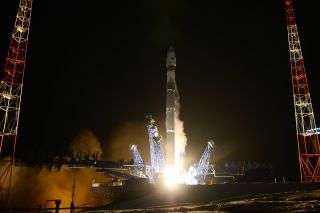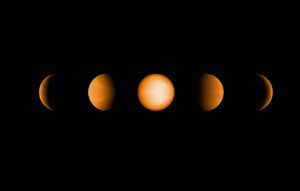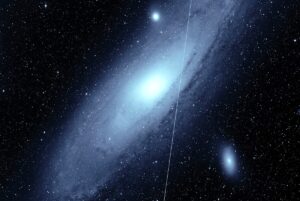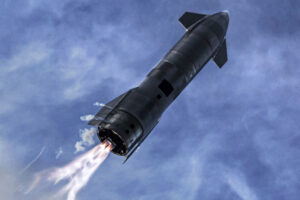
A Russian Soyuz 2.1v rocket launches a classified military satellite into orbit from the Plesetsk Cosmodrome in northern Russian on Nov. 25, 2019. The satellite can apparently track other satellites in orbit.
A U.S. spy satellite is being trailed by two Russian satellites, according to the commander of the U.S. Space Force.
Yesterday (Feb. 10), Gen. John “Jay” Raymond, the Space Force chief of space operations, revealed to Time magazine that a pair of Russian satellites have come extremely close, within 100 miles (160 kilometers) of the U.S. spy satellite.
“We view this behavior as unusual and disturbing,” Raymond told Time magazine. “It has the potential to create a dangerous situation in space.”
Raymond said that the U.S. government has reached out to Moscow about the close range of the satellites, expressing concern “through diplomatic channels.”
Video: Watch Russia launch the two mysterious satellites
More: Declassified US Spy Satellite Photos & Designs
The Russian spacecraft launched in November as one satellite, which later released a second satellite from within it, almost “birthing” it, U.S. military analysts said. According to the Russian news agency TASS, this maneuver was meant to test the “technical condition of domestic satellites.”
In an interview with Business Insider, Raymond said the two satellites have been behaving similarly to what are known as “inspector satellites” from Russia. “In any other domain,” such a move “would be interpreted as potentially threatening behavior,” he told Business Insider.
The Russian satellites were first spotted by Michael Thompson, a satellite and spacecraft enthusiast who tweeted about the observations.
“Something to potentially watch: Cosmos 2542, a Russian inspection satellite, has recently synchronized its orbit with USA 245, an NRO KH11,” Thompson tweeted.
Something to potentially watch: Cosmos 2542, a Russian inspection satellite, has recently synchronized its orbit with USA 245, an NRO KH11.A thread: pic.twitter.com/LqvYiIYBMdJanuary 30, 2020
“This is all circumstantial evidence, but there are a hell of a lot of circumstances that make it look like a known Russian inspection satellite is currently inspecting a known U.S. spy satellite,” Thompson tweeted on Jan. 30.
This is all circumstantial evidence, but there are a hell of a lot of circumstances that make it look like a known Russian inspection satellite is currently inspecting a known US spy satellite.January 30, 2020
This is the first time that the U.S. military has publicly revealed a direct threat from another country to a U.S. satellite. Identifying and rectifying such concerns was a huge reason behind the Space Force. As more and more satellites are launched with increased capabilities to gather information from space, more opportunities are created for interference from these satellites.
Space Force, the new U.S. military branch, which will receive $15.4 billion as part of the Trump administration’s 2021 budget proposal, will be a “technology-focused service,” according to Raymond, Space Force’s first official leader. The branch aims to protect the interests of the U.S. in space, which will include mitigating aggressive acts and interference in American progress.
Ongoing efforts by both Russia and China to advance their space programs has factored into the establishment of the Space Force. Now, while the Space Force continues to investigate the two Russian satellites, political tensions between the two nations remain high over accusations of Russian interference in the U.S. electoral system.
Sourse: www.livescience.com





